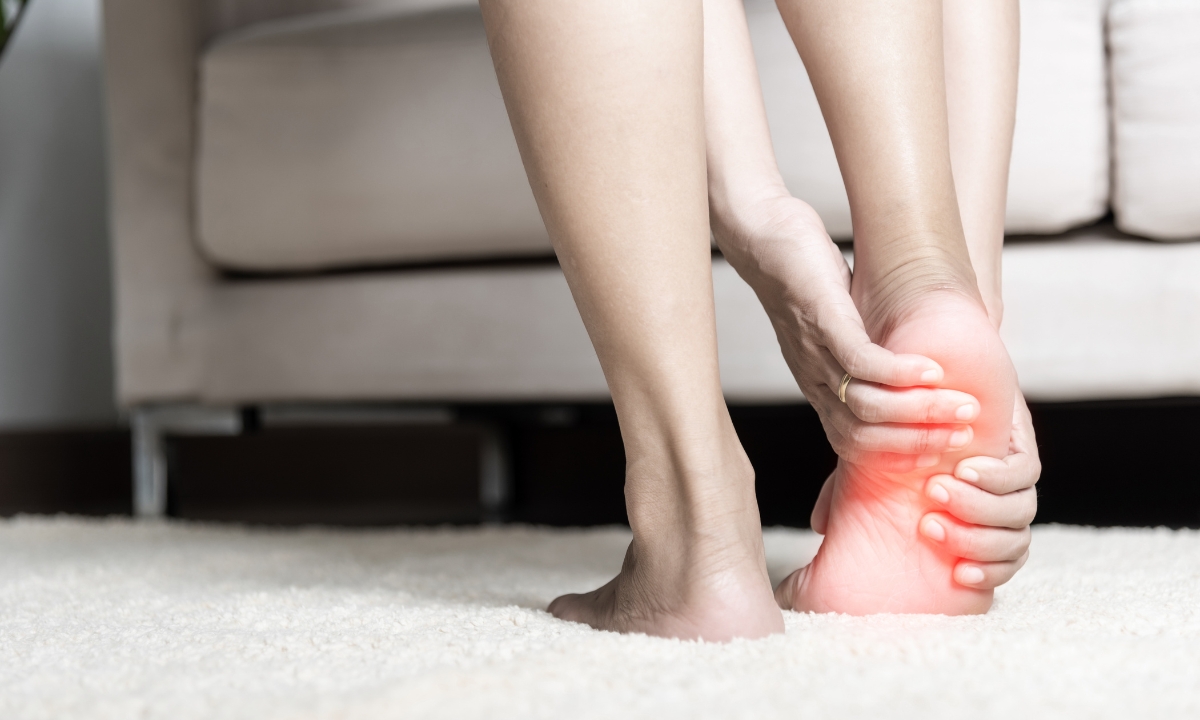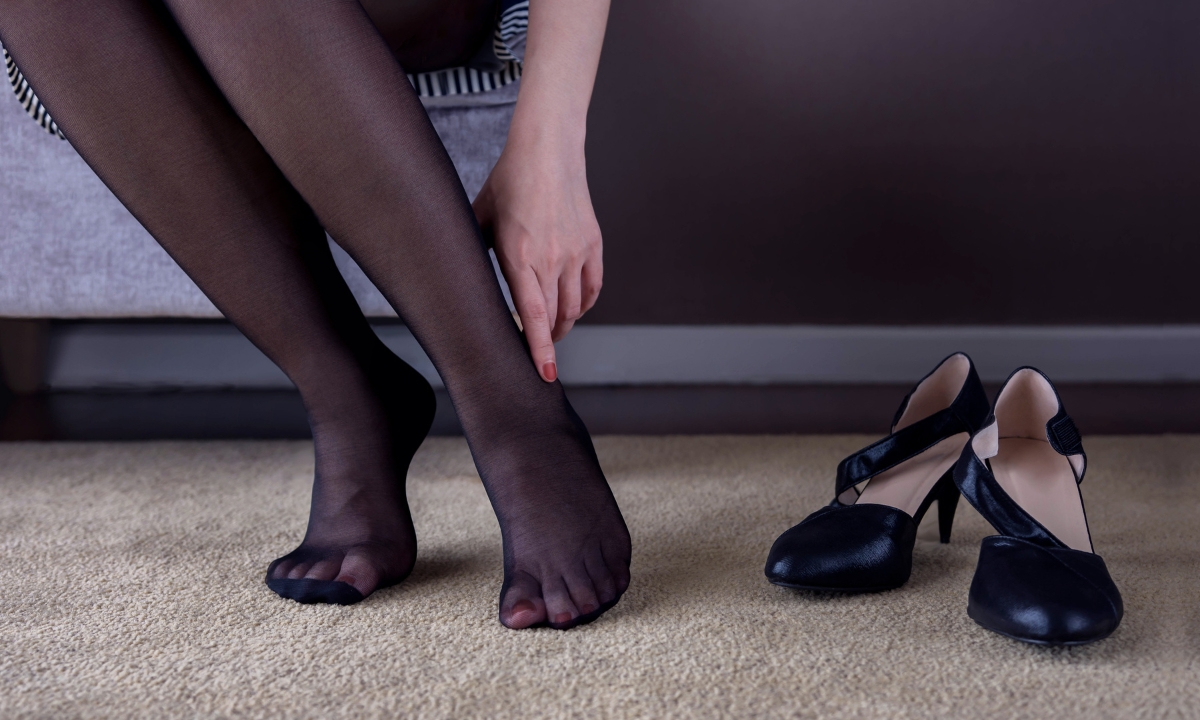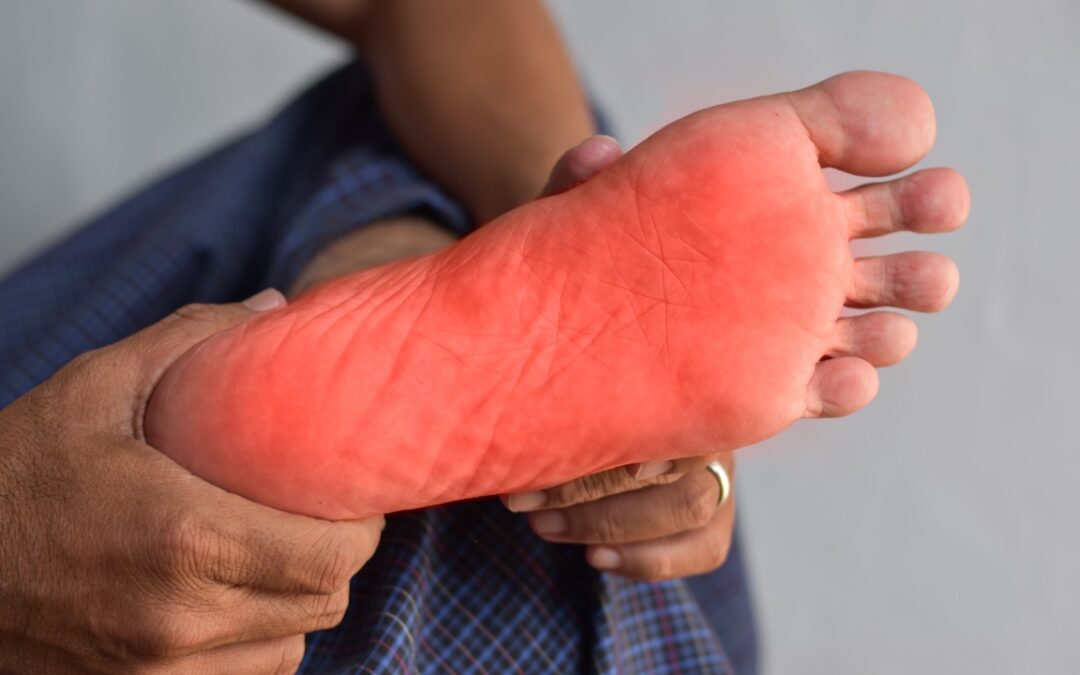“Plantar fasciitis was one of the most painful experiences I have had in life.” – Steven Magee, Magee’s Disease
Foot pain can be a daily obstacle that affects your mobility and quality of life, and one of the most common culprits is plantar fasciitis. This condition affects millions of people each year, causing persistent heel pain that can be frustrating and difficult to manage. Plantar fasciitis is a common condition characterized by pain in the heel or arch of the foot, often worse in the morning upon getting out of bed.
It occurs due to inflammation of the plantar fascia, a thick band of tissue that connects your heel bone to your toes. While it can be painful, plantar fasciitis is often treatable with a combination of self-care measures and professional guidance. Learn what plantar fasciitis is, its causes and symptoms, and the best treatment options to help you get back on your feet—literally.

What is Plantar Fasciitis?
Plantar fasciitis is an inflammation of the plantar fascia, a thick band of tissue that runs along the bottom of your foot, connecting your heel bone to your toes. The plantar fascia acts as a shock absorber and supports the arch of your foot. However, when too much stress is placed on this tissue, it can become inflamed. This can be caused by repetitive strain, such as standing or walking for long periods, or by tight calf muscles, leading to pain that’s typically felt near the heel.
Plantar fasciitis is one of the most common causes of heel pain and is particularly prevalent among runners, athletes, and people who spend a lot of time on their feet. Left untreated, this condition can progress and lead to chronic pain that affects your daily activities.
Causes of Plantar Fasciitis
Plantar fasciitis develops when there’s repeated strain on the plantar fascia. Several factors can contribute to this strain, including:
- Foot Structure: Individuals with flat feet, high arches, or abnormal walking patterns may be more prone to developing plantar fasciitis. These structural issues can affect how weight is distributed across the foot, leading to increased tension on the plantar fascia.
- Overuse: Activities that put significant stress on the heel and surrounding tissues, such as running, dancing, or high-impact sports, can cause microtears in the plantar fascia. Runners who suddenly increase their mileage or intensity without proper preparation are especially at risk.
- Improper Footwear: Wearing shoes that lack proper support, cushioning, or arch support can exacerbate stress on the plantar fascia. Shoes with worn-out soles or inadequate shock absorption, especially when standing or walking for long periods, can contribute to the development of this condition.
- Occupational Demands: Jobs that require standing or walking on hard surfaces for extended periods, such as teaching, factory work, or retail, can increase your risk of developing plantar fasciitis.
- Age and Weight: Plantar fasciitis is most common in people between the ages of 40 and 60. Additionally, carrying excess weight can place more pressure on the plantar fascia, making it more susceptible to injury.
Symptoms of Plantar Fasciitis
The hallmark symptom of plantar fasciitis is a sharp, stabbing pain near the heel, especially when taking your first steps in the morning. Pain is typically worse in the morning or after periods of inactivity. This “first-step pain” occurs because the plantar fascia tightens while you sleep, and the sudden stretch when you stand up can cause significant discomfort. As the day progresses, the pain may subside, but it often returns later in the evening or the next day.
Other common symptoms include:
- Pain that worsens after prolonged periods of standing or sitting
- Pain after exercise or activity, rather than during it
- Stiffness or tenderness in the heel
- Pain that radiates along the arch of the foot
- In some cases, there may be mild swelling in the heel.
The pain associated with plantar fasciitis typically eases with movement but can return after periods of rest or inactivity.
Effective Treatment Options for Plantar Fasciitis
Fortunately, there are several treatment options available to manage plantar fasciitis and relieve the associated pain. In many cases, conservative treatments are effective in alleviating symptoms and promoting healing.
- Rest and Activity Modification: Giving your feet time to heal is essential. Reduce or avoid activities that aggravate the condition, such as running or standing for long periods. Low-impact exercises like swimming or cycling can help maintain fitness while reducing stress on the plantar fascia.
- Stretching and Strengthening Exercises: Regular stretching exercises can help relieve tension in the plantar fascia, Achilles tendon, and calf muscles. Simple stretches like calf stretches, towel stretches, and rolling your foot over a frozen water bottle can be highly effective. Strengthening exercises that focus on the muscles of the foot and lower leg can also improve stability and reduce the strain on the plantar fascia. According to John Hopkins Medicine, “Stretching is one of the best treatments for plantar fasciitis. Stretching should be focused on the plantar fascia and the Achilles tendon. A physical therapist can show you stretching exercises that you can repeat at home several times a day.”
- Proper Footwear and Orthotics: Wearing supportive shoes with cushioned soles and good arch support is crucial in managing plantar fasciitis. Orthotic inserts, whether custom-made or over-the-counter, can help distribute pressure more evenly across your foot and provide additional support where needed.
- Ice Therapy: Applying ice to the affected area can help reduce inflammation and numb the pain. Rolling your foot over a frozen bottle or applying an ice pack for 15-20 minutes several times a day can be beneficial.
- Physical Therapy: A physical therapist can design a personalized treatment plan that includes manual therapy, specific exercises, and modalities like ultrasound to promote healing and relieve pain.
- Night Splints: Wearing a night splint can keep the plantar fascia and Achilles tendon gently stretched while you sleep, reducing morning pain.
- Anti-Inflammatory Medications: Over-the-counter nonsteroidal anti-inflammatory drugs (NSAIDs) such as ibuprofen or naproxen can help reduce inflammation and alleviate pain.
- Corticosteroid Injections: In more severe cases, a healthcare provider may recommend corticosteroid injections to reduce inflammation and provide temporary relief. However, these should be used with caution, as repeated injections can weaken the plantar fascia over time.
- Extracorporeal Shockwave Therapy (ESWT): This non-invasive procedure uses sound waves to stimulate healing in the plantar fascia. It is often recommended for chronic cases that do not respond to other treatments.
- Surgical Options: Surgery is typically considered only after six to twelve months of conservative treatment has failed. Plantar fascia release surgery involves detaching the plantar fascia from the heel bone to reduce tension, though it’s usually a last resort due to potential risks and a longer recovery time.
Active Release Techniques® – A Better Option
Active Release Techniques®, or ART®, can be a quick and effective way to break down scar tissue in the plantar fascia and other foot muscles. By targeting these adhesions, ART® helps to reduce inflammation and alleviate pain, allowing you to return to your daily activities without discomfort.
Recognizing that plantar fasciitis is an injury rather than a chronic condition is crucial for proper treatment. ART® is particularly beneficial for overuse injuries like plantar fasciitis because it directly addresses the accumulation of scar tissue that contributes to pain and restricted movement.
At Pain and Performance Solutions, we understand how effective ART® therapy can be in treating plantar fasciitis. This specialized soft tissue treatment allows us to identify and address scar tissue adhesions that develop in the muscles and connective tissues of the foot.
By applying Active Release Techniques® to break down these adhesions around the plantar fascia, we help restore normal tissue flexibility, improve movement, and ultimately enhance overall comfort. This approach aims to restore your balance, stability, and help you achieve long-term pain relief.
Preventing Plantar Fasciitis
While it may not always be possible to prevent plantar fasciitis, certain lifestyle changes can help reduce your risk. Taking preventive measures is key to avoiding plantar fasciitis, especially if you’re prone to foot problems. Here are some tips to keep your feet healthy:
- Maintain a healthy weight: Excess weight puts additional strain on the plantar fascia.
- Wear supportive footwear: Choose shoes with good arch support and cushioning. Replace worn-out shoes regularly, especially running shoes.
- Stretch regularly: Stretching the calf muscles and plantar fascia can help prevent tightness and inflammation.
- Avoid sudden increases in activity: Gradually increase the intensity and duration of your physical activities. Warm up before exercise.
- Take breaks: If your job involves standing or walking for long periods, take frequent breaks to rest your feet.
- Listen to your body: avoid pushing through pain and give your feet time to recover after intense activities.
Putting Your Foot Down When It Comes to Plantar Fasciitis Pain
Plantar fasciitis is a painful condition that can impact your ability to stay active and enjoy daily activities. However, with proper care, targeted treatment, and preventive strategies, most people can effectively manage their symptoms and return to their normal routines. If you’re struggling with persistent heel pain, don’t hesitate to consult a healthcare provider who can guide you through a personalized treatment plan to find relief and regain your mobility.

Take Your Fight Against Plantar Fasciitis to Pain and Performance Solutions
During your initial appointment here at Pain and Performance Solutions, we will learn all we can about your present foot pain, along with any history of discomfort. A full examination will help us determine which form of treatment is best suited to get you on your road to recovery. At Pain and Performance Solutions, we understand that getting your body healthy and working properly is the only way to achieve total recovery.
Our goal is to work through the sequence of pain and dysfunction in order to get your body healthy and working properly and to achieve total recovery. So, don’t hesitate to reach out. We are here to help and will answer any questions that you may have.
You can reach us at (707) 636-4404 or by filling out our online contact form.
